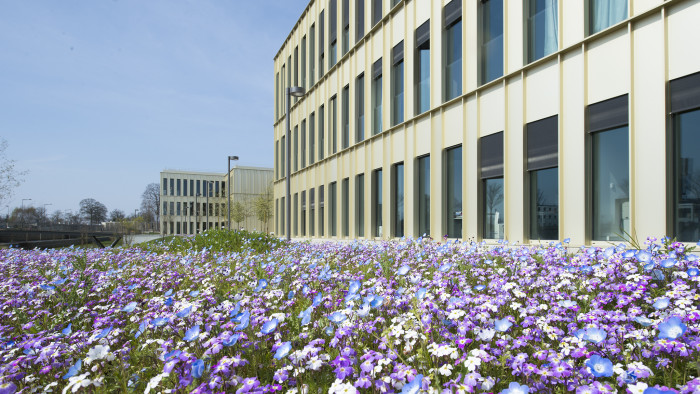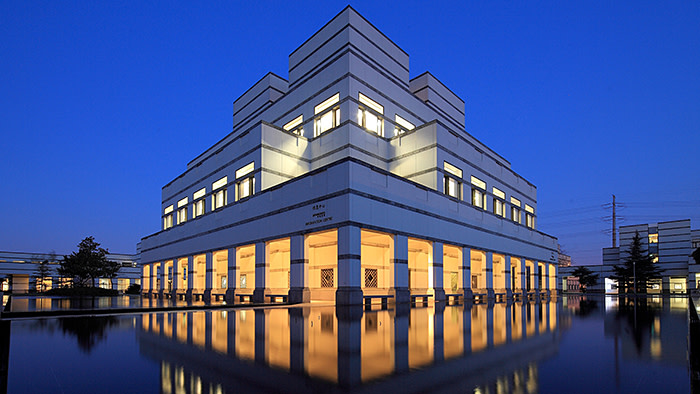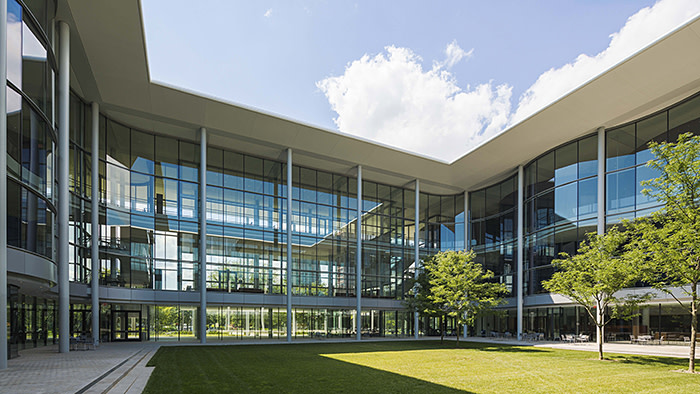HEC takes top spot in FT Executive MBA Ranking 2019

Roula Khalaf, Editor of the FT, selects her favourite stories in this weekly newsletter.
In this year’s Financial Times executive MBA ranking, HEC Paris takes the top spot, up from sixth place last year, helped by the career progress and work experience of the graduates surveyed.
There is little movement elsewhere among the list’s top five programmes. The rankings of the EMBA-Global Asia, run by Columbia Business School, the University of Hong Kong and London Business School, and the Ceibs Global EMBA remain unchanged from last year, for example.
The executive MBA is a part-time programme often taken by people more established in their careers compared with those on full-time courses. Applications for traditional two-year, full-time MBA programmes in the US have declined overall for five straight years, according to the Graduate Management Admission Council, which administers business school entrance exams.
The EMBA, in contrast, “is a competitive market, but more stable than other MBA programme types,” says Michael Desiderio, executive director of the Executive MBA Council (Embac), an academic association.
One possible reason for EMBAs’ enduring popularity is that while the courses often involve a lot of travel between countries, students do not need to move countries and disrupt their home life in the way that some full-time MBA students might for full-time study.
FT EMBA Ranking 2019

The table in full
Find out which business schools have made it to the top 100 in the 19th edition of the FT EMBA ranking. Also, learn how the table is compiled.
Diversity is a key goal for all MBA programmes, but gender balance remains a challenge for many executive courses at the top of the FT list. The joint programme run by Washington University’s Olin School of Business, in St Louis, and Fudan in China is the only member of the top 10 to achieve near parity in its class intake, with women accounting for 49 per cent of the student cohort.
Other programmes have much less diversity and, in some cases, it is getting worse. Kellogg School of Management’s joint programme with Hong Kong University of Science and Technology had been top of the FT executive MBA ranking for three years before slipping to second place in the current list. Its percentage of female students is just 22 per cent, down from 28 per cent in 2018.
One explanation might be the seniority of EMBA students. Course participants usually have about 14 years’ work experience, compared with five for those on the full-time degree course, according to Embac. Gender balance among more senior business roles tends to be worse than at lower levels of organisations.
Where EMBA courses score highly is in the ethnic diversity of students and faculty members. The majority of staff and students among top five programmes on the FT list are overseas professionals. At HEC Paris, 69 per cent of faculty and 81 per cent of students are from outside France.
This is one of the big attractions of executive programmes: students want to learn from people with different backgrounds and world views, and to travel during study trips. Many of the EMBA courses in the ranking are joint-school programmes, which encourages such opportunities.
Despite the appetite for global perspectives, the locations of the world’s leading EMBA courses have barely changed. The FT’s list continues to be dominated by courses from the US, China, France and the UK.
Those in the business education sector are alive to the need to adapt and enhance courses, but our ranking list also shows that in the EMBA market at least, stability remains an important feature.
Top school overall: HEC Paris

HEC Paris has built on last year’s strong performance when it was the highest new entrant, in joint sixth place. The success of its international EMBA programme is partly thanks to ranking top for career progression (up from third in 2018) and a sharp rise in its work experience performance, jumping from 39th last year to fifth. One alumnus, who was inspired to set up their own company after the course, said: “The strong HEC entrepreneurship culture gave me the self-confidence and courage to move ahead.”
Highest salary: Kellogg/HKUST

Kellogg/HKUST has lost its top spot overall in the EMBA rankings, held since 2016, to fall to second. However, the programme’s alumni have the highest average salary in this year’s ranking at $513,014, three years after completing their studies. The salary increase for students on the course is 63 per cent, putting the school in joint 26th position in this category.
Return to the top 10: London Business School

London Business School rises to eighth position, its first time in the top 10 since 2011. This is partly the result of a strong increase in salary, up from $243,250 last year to $292,023 for 2019. There has also been a rise in the percentage salary increase, from 68 per cent last year to 78 per cent now. Other strong factors are increases in career progression, from 24th last year to 12th position, and research, from 17th to 10th over the same timeframe.
Highest-ranking solo EMBA in Asia: Ceibs

After a big jump into the higher echelons of the rankings last year, Chinese school Ceibs has retained fifth position this year, making it the highest-ranking solo programme in Asia. The school’s alumni have strong career progression, ranked seventh in the category overall, with many alumni in senior roles such as directors or vice-presidents. It was also number three for average salary, at $446,495.
Best work/international course experience: Trium: HEC Paris/LSE/NYU: Stern

The Trium Global EMBA comes third overall in this year’s ranking, down one place from 2018, but retains the top spot for both work experience and international course experience. The 18-month course is spread over five locations — modules are taken in Shanghai, Paris, London, New York and California — but the format is designed so that students spend 10 weeks away from the office.
Best for alumni aims achieved: EMBA-Global Asia: Columbia/HKU/LBS

The EMBA-Global Asia course has held on to its fourth position in the ranking overall, and is one of the best in the alumni aims achieved category. This includes factors such as improving earnings and establishing a professional network. The programme has also risen three places to rank second for international course experience and from 68th to third position for career progression between 2018 and 2019.
Biggest riser: Antwerp Management School

Antwerp Management School is the table’s highest riser, moving up 23 places to joint 62nd with Grenoble Ecole de Management and Incae Business School. One reason is improved diversity among staff and students: between 2018 and 2019, it achieved the highest increase in the proportion of female students and one of the highest increases in the share of female faculty. Alumni also reported improved earnings, offsetting a drop in the school’s career progression rating.
Highest new entrant: Yale School of Management

Yale School of Management, in 17th position, is this year’s highest new entrant. Its success is mostly due to alumni’s reported financial compensation: they have the highest salary rise three years after graduation, up 123 per cent on average. The programme’s healthcare track was also popular among graduates: “Yale was the perfect business school for me; [it] had just opened up the asset management and sustainability tracks, alongside healthcare, which gave me the opportunity to cross-train in these disciplines.”
Best for gender balance: Gordon Institute of Business Science at UP

South Africa’s Gordon Institute of Business Science at the University of Pretoria is the most gender-balanced school in the ranking: women make up 50 per cent of faculty and 51 per cent of the student body. The school performed well in other categories, ranking 16th for coverage of corporate social responsibility in its EMBA’s core curriculum. But it fell 15 places overall, from 67th position to 82nd, partly due to a large drop in the increase in salary for graduates.
Comments